HSBC 2006 Annual Report Download - page 32
Download and view the complete annual report
Please find page 32 of the 2006 HSBC annual report below. You can navigate through the pages in the report by either clicking on the pages listed below, or by using the keyword search tool below to find specific information within the annual report.-
 1
1 -
 2
2 -
 3
3 -
 4
4 -
 5
5 -
 6
6 -
 7
7 -
 8
8 -
 9
9 -
 10
10 -
 11
11 -
 12
12 -
 13
13 -
 14
14 -
 15
15 -
 16
16 -
 17
17 -
 18
18 -
 19
19 -
 20
20 -
 21
21 -
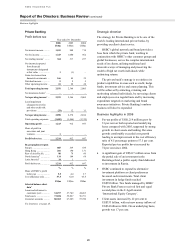 22
22 -
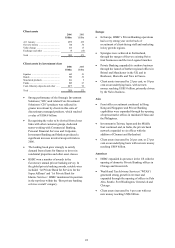 23
23 -
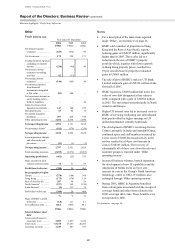 24
24 -
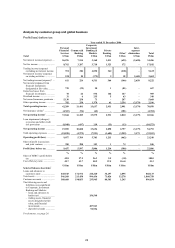 25
25 -
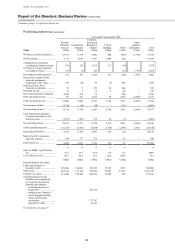 26
26 -
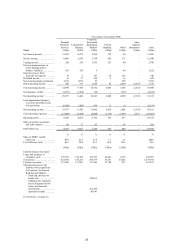 27
27 -
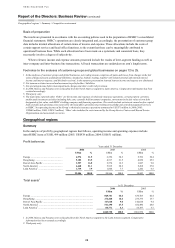 28
28 -
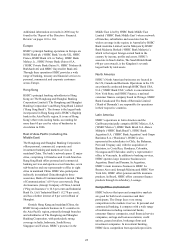 29
29 -
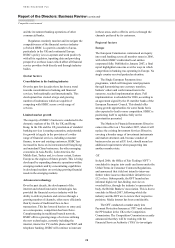 30
30 -
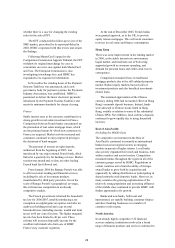 31
31 -
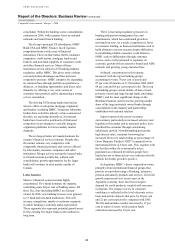 32
32 -
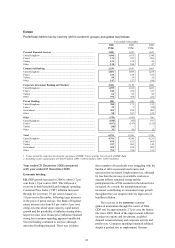 33
33 -
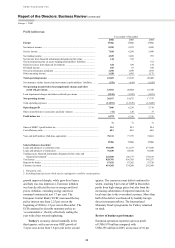 34
34 -
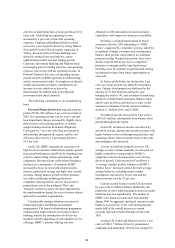 35
35 -
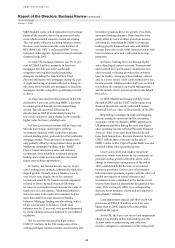 36
36 -
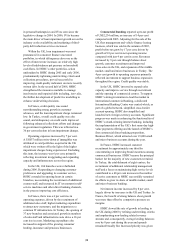 37
37 -
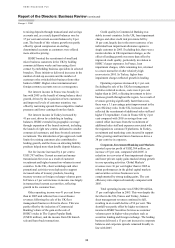 38
38 -
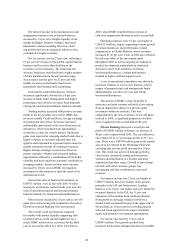 39
39 -
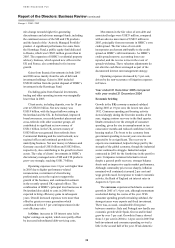 40
40 -
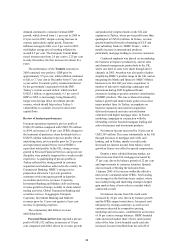 41
41 -
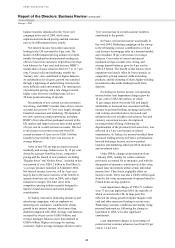 42
42 -
 43
43 -
 44
44 -
 45
45 -
 46
46 -
 47
47 -
 48
48 -
 49
49 -
 50
50 -
 51
51 -
 52
52 -
 53
53 -
 54
54 -
 55
55 -
 56
56 -
 57
57 -
 58
58 -
 59
59 -
 60
60 -
 61
61 -
 62
62 -
 63
63 -
 64
64 -
 65
65 -
 66
66 -
 67
67 -
 68
68 -
 69
69 -
 70
70 -
 71
71 -
 72
72 -
 73
73 -
 74
74 -
 75
75 -
 76
76 -
 77
77 -
 78
78 -
 79
79 -
 80
80 -
 81
81 -
 82
82 -
 83
83 -
 84
84 -
 85
85 -
 86
86 -
 87
87 -
 88
88 -
 89
89 -
 90
90 -
 91
91 -
 92
92 -
 93
93 -
 94
94 -
 95
95 -
 96
96 -
 97
97 -
 98
98 -
 99
99 -
 100
100 -
 101
101 -
 102
102 -
 103
103 -
 104
104 -
 105
105 -
 106
106 -
 107
107 -
 108
108 -
 109
109 -
 110
110 -
 111
111 -
 112
112 -
 113
113 -
 114
114 -
 115
115 -
 116
116 -
 117
117 -
 118
118 -
 119
119 -
 120
120 -
 121
121 -
 122
122 -
 123
123 -
 124
124 -
 125
125 -
 126
126 -
 127
127 -
 128
128 -
 129
129 -
 130
130 -
 131
131 -
 132
132 -
 133
133 -
 134
134 -
 135
135 -
 136
136 -
 137
137 -
 138
138 -
 139
139 -
 140
140 -
 141
141 -
 142
142 -
 143
143 -
 144
144 -
 145
145 -
 146
146 -
 147
147 -
 148
148 -
 149
149 -
 150
150 -
 151
151 -
 152
152 -
 153
153 -
 154
154 -
 155
155 -
 156
156 -
 157
157 -
 158
158 -
 159
159 -
 160
160 -
 161
161 -
 162
162 -
 163
163 -
 164
164 -
 165
165 -
 166
166 -
 167
167 -
 168
168 -
 169
169 -
 170
170 -
 171
171 -
 172
172 -
 173
173 -
 174
174 -
 175
175 -
 176
176 -
 177
177 -
 178
178 -
 179
179 -
 180
180 -
 181
181 -
 182
182 -
 183
183 -
 184
184 -
 185
185 -
 186
186 -
 187
187 -
 188
188 -
 189
189 -
 190
190 -
 191
191 -
 192
192 -
 193
193 -
 194
194 -
 195
195 -
 196
196 -
 197
197 -
 198
198 -
 199
199 -
 200
200 -
 201
201 -
 202
202 -
 203
203 -
 204
204 -
 205
205 -
 206
206 -
 207
207 -
 208
208 -
 209
209 -
 210
210 -
 211
211 -
 212
212 -
 213
213 -
 214
214 -
 215
215 -
 216
216 -
 217
217 -
 218
218 -
 219
219 -
 220
220 -
 221
221 -
 222
222 -
 223
223 -
 224
224 -
 225
225 -
 226
226 -
 227
227 -
 228
228 -
 229
229 -
 230
230 -
 231
231 -
 232
232 -
 233
233 -
 234
234 -
 235
235 -
 236
236 -
 237
237 -
 238
238 -
 239
239 -
 240
240 -
 241
241 -
 242
242 -
 243
243 -
 244
244 -
 245
245 -
 246
246 -
 247
247 -
 248
248 -
 249
249 -
 250
250 -
 251
251 -
 252
252 -
 253
253 -
 254
254 -
 255
255 -
 256
256 -
 257
257 -
 258
258 -
 259
259 -
 260
260 -
 261
261 -
 262
262 -
 263
263 -
 264
264 -
 265
265 -
 266
266 -
 267
267 -
 268
268 -
 269
269 -
 270
270 -
 271
271 -
 272
272 -
 273
273 -
 274
274 -
 275
275 -
 276
276 -
 277
277 -
 278
278 -
 279
279 -
 280
280 -
 281
281 -
 282
282 -
 283
283 -
 284
284 -
 285
285 -
 286
286 -
 287
287 -
 288
288 -
 289
289 -
 290
290 -
 291
291 -
 292
292 -
 293
293 -
 294
294 -
 295
295 -
 296
296 -
 297
297 -
 298
298 -
 299
299 -
 300
300 -
 301
301 -
 302
302 -
 303
303 -
 304
304 -
 305
305 -
 306
306 -
 307
307 -
 308
308 -
 309
309 -
 310
310 -
 311
311 -
 312
312 -
 313
313 -
 314
314 -
 315
315 -
 316
316 -
 317
317 -
 318
318 -
 319
319 -
 320
320 -
 321
321 -
 322
322 -
 323
323 -
 324
324 -
 325
325 -
 326
326 -
 327
327 -
 328
328 -
 329
329 -
 330
330 -
 331
331 -
 332
332 -
 333
333 -
 334
334 -
 335
335 -
 336
336 -
 337
337 -
 338
338 -
 339
339 -
 340
340 -
 341
341 -
 342
342 -
 343
343 -
 344
344 -
 345
345 -
 346
346 -
 347
347 -
 348
348 -
 349
349 -
 350
350 -
 351
351 -
 352
352 -
 353
353 -
 354
354 -
 355
355 -
 356
356 -
 357
357 -
 358
358 -
 359
359 -
 360
360 -
 361
361 -
 362
362 -
 363
363 -
 364
364 -
 365
365 -
 366
366 -
 367
367 -
 368
368 -
 369
369 -
 370
370 -
 371
371 -
 372
372 -
 373
373 -
 374
374 -
 375
375 -
 376
376 -
 377
377 -
 378
378 -
 379
379 -
 380
380 -
 381
381 -
 382
382 -
 383
383 -
 384
384 -
 385
385 -
 386
386 -
 387
387 -
 388
388 -
 389
389 -
 390
390 -
 391
391 -
 392
392 -
 393
393 -
 394
394 -
 395
395 -
 396
396 -
 397
397 -
 398
398 -
 399
399 -
 400
400 -
 401
401 -
 402
402 -
 403
403 -
 404
404 -
 405
405 -
 406
406 -
 407
407 -
 408
408 -
 409
409 -
 410
410 -
 411
411 -
 412
412 -
 413
413 -
 414
414 -
 415
415 -
 416
416 -
 417
417 -
 418
418 -
 419
419 -
 420
420 -
 421
421 -
 422
422 -
 423
423 -
 424
424 -
 425
425 -
 426
426 -
 427
427 -
 428
428 -
 429
429 -
 430
430 -
 431
431 -
 432
432 -
 433
433 -
 434
434 -
 435
435 -
 436
436 -
 437
437 -
 438
438 -
 439
439 -
 440
440 -
 441
441 -
 442
442 -
 443
443 -
 444
444 -
 445
445 -
 446
446 -
 447
447 -
 448
448 -
 449
449 -
 450
450 -
 451
451 -
 452
452 -
 453
453 -
 454
454 -
 455
455 -
 456
456 -
 457
457 -
 458
458
 |
 |

HSBC HOLDINGS PLC
Report of the Directors: Business Review (continued)
Competitive environment / Europe > 2006
30
consolidate. Within the banking sector, consolidation
continued in 2006, with a greater focus on national
networks and retail branch banking.
The Group’s principal US subsidiaries, HSBC
Bank USA and HSBC Finance, faced vigorous
competition from a wide array of financial
institutions. These include banks, thrifts, insurance
companies, credit unions, mortgage lenders and
brokers, and non-bank suppliers of consumer credit
and other financial services. Many of these
institutions are not subject to US banking industry
regulation, unlike HSBC. This gives some of them
cost and product advantages and thus increases
competitive pressure. HSBC competes by expanding
its customer base through portfolio acquisitions or
alliances, co-branding opportunities and direct sales
channels, by offering a very wide variety of
consumer loan products and by maintaining a strong
service orientation.
The slowing US housing market has had an
adverse effect on sub-prime mortgage originators
and lenders, including HSBC. Numerous sub-prime
lenders have exited the industry or have announced
that they are exploring alternatives. Investment
banks have been active purchasers of distressed
competitors in an attempt to vertically integrate
origination platforms to feed secondary market
demands.
The six largest banks in Canada dominate the
country’s financial services industry. Despite this,
the market remains very competitive with
comparable financial products and services offered
by other banks, insurance companies and other
institutions. Merger activity among the largest banks
in Canada remains possible but, without such
consolidation, growth opportunities for the larger
banks will continue to exist mainly outside of
Canada.
Latin America
Mexico’s financial system remains highly
concentrated. Five banks dominate the industry,
controlling some 80 per cent of banking assets. Of
these five, four (including HSBC) are foreign-
owned. In 2006, new banking licences were granted
to 13 bank and non-bank institutions. This will
increase competition, mainly in customer segments
in which banking is currently under-represented.
These segments also represent potential growth areas
for the existing five major banks in the medium to
long term.
There is increasing regulatory pressure on
banking and pension management fees and
commissions, which has constrained growth in
non-funds income. As a result, competition is fierce
in consumer lending, as financial institutions seek to
build alternative income streams despite difficulties
in establishing reliable consumer credit histories.
HSBC seeks to differentiate through customer
service, and is well positioned to capitalise on
economic growth with its extensive branch and ATM
network, and growing young customer base.
In Brazil, concentration in the industry
increased, with the top ten banking groups
accounting for some 70 per cent of assets and
87 per cent of branches at 31 December 2006 (2005:
68 per cent and 86 per cent respectively). These top
ten banking groups consist mainly of state-owned,
privately owned and large foreign banks (including
HSBC), and the most significant change in the
Brazilian financial system was the growing market
share of the larger privately owned banks through
consolidation in the industry and partnerships
established with national retailers.
Improvements in the macro-economic
environment, particularly in increased solvency and
liquidity in the market and in monetary policy, have
benefited the consumer through constraining
inflationary growth. Notwithstanding persistently
high interest rates, consumer borrowing has
increased. However, total lending as a percentage of
Gross Domestic Product (‘GDP’) remained low in
international terms at 34 per cent. This, together with
the fact that within the economically active
population an estimated 40 million people have
limited access to financial services, indicates that the
outlook for further growth is positive.
In Argentina, HSBC’s direct competition comes
primarily from international financial groups that
provide an equivalent range of banking, insurance,
pension and annuity products and services. Given the
growth experienced over recent years in the
Argentine economy, there has been resurgent
demand for credit products, coupled with increases
in deposits. The strong recovery in consumer
confidence is reflected in the level of private sector
loans and private deposits that grew by 40 per cent
and 22 per cent respectively compared with 2005.
The life and annuities market increased by 17 per
cent in terms of assets, while pension funds
collections increased by 30 per cent.
